- Details
- Category: Page
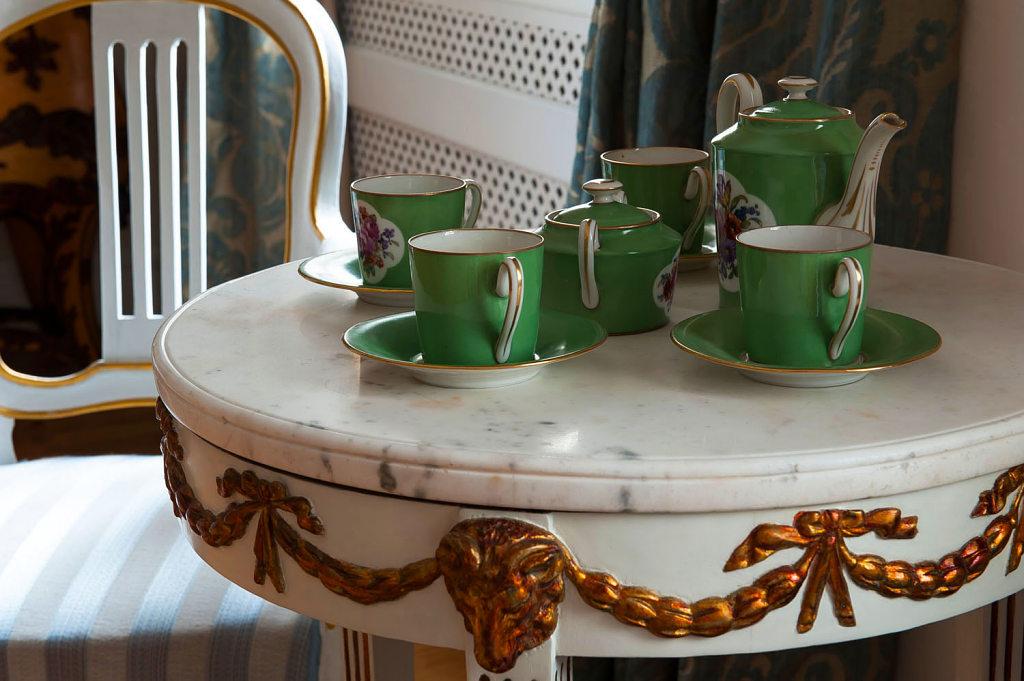 Our collection has been built for years through Museum's own purchases and acquisitions, exhibits we inherited from the Regional Museum of the Polish Tourist and Sightseeing Society, and items donated to us by individuals, the Polish American community, and their organizations.
Our collection has been built for years through Museum's own purchases and acquisitions, exhibits we inherited from the Regional Museum of the Polish Tourist and Sightseeing Society, and items donated to us by individuals, the Polish American community, and their organizations.
We focus on historical pieces and memorabilia connected with Casimir Pulaski and other great Polish expatriates in the United States, items from the 18th century Poland and the rule of Stanislaw II August Poniatowski, decor from the 18th and 19th century manors and palaces. We are proud of our collection of furniture sets, clocks, Polish and Ottoman textiles, portraits, battle scenes, and other paintings, Polish and American maps, old prints, porcelain, silver, and weapons. Especially noteworthy is our portrait collection, depicting Casimir Pulaski, Tadeusz Kosciuszko, and a rich collection of old American maps.
Since its early days, the Museum has been gathering old items and memorabilia connected with the town of Warka and its environs.
- Details
- Category: Page
Casimir Pulaski (1745-1779)
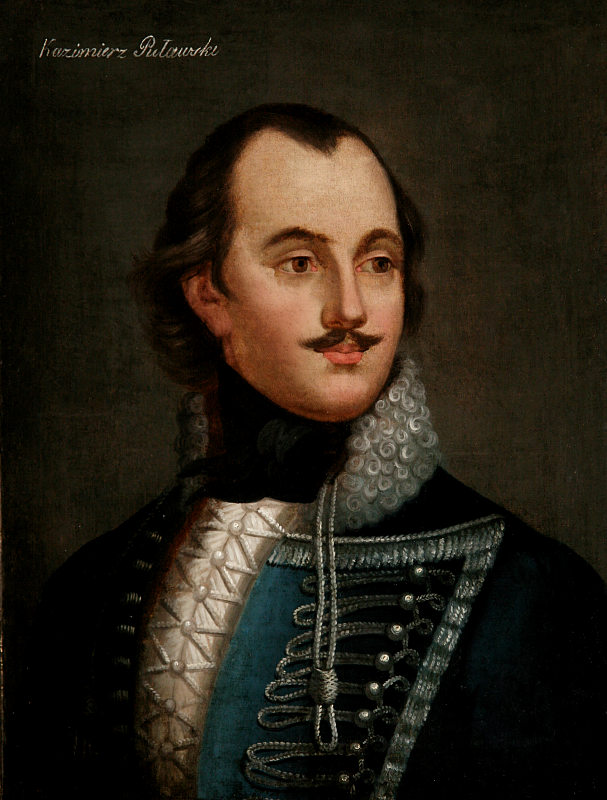
General Pulaski was born on March 4 or March 6, 1745 in Warsaw at the home of Warka District Governor Jozef Pulaski. His mother was Marianna from the Zielinski family. He spent his childhood in Warka and its environs, and attended a local parish school. Later, he graduated from a Warsaw-based Collegium Nobilium run by the Theatines. In 1762 and 1763, the young Casimir served at the court of Prince Karl Christian Joseph of Saxony, Duke of Courland and son of Augustus III, King of Poland, in Mitau (today’s Jelgava, Latvia). This time was crucial in shaping his life, and highly influenced his political stances. Courland, part of the Duchy of Courland and Semigallia, was, at the time, a vassal state of the Polish-Lithuanian Commonwealth. Catherine II of Russia, also known as Catherine the Great, took great interest in this territory, which soon became a battleground. Pulaski had a firsthand experience of the conflict when Russian troops besieged Mitau in February 1763. Prince Karl Christian was humiliated and exiled, and Pulaski saw Russia's force and learnt about Catherine's true intentions toward Poland.
Russia was moving closer and closer to a military confrontation against Poland, and its interference in Poland's internal matters loomed over the Commonwealth. Polish nobility struck back. On February 29, 1768, they drafted and adopted a declaration of confederacy in a Carmelite monastery in the town of Bar in the historic region of Podolia (now Ukraine). They chose to defend their rights, Poland's independence, and Catholic faith. The Bar Confederation's main leaders were Michal Krasinski, a brother of Kamianets-Podilskyi Bishop named Adam Krasinski, and Jozef Pulaski, father of Casimir Pulaski, who took the role of the troops' marshal and military commander.
Casimir Pulaski, along with his brothers Franciszek and Antoni, began to gather nobility forces to form cavalry regiments. The resulting Polish-Russian war continued for five years. Its battlefields were scattered all across the country, from today's Ukraine, Belarus, and Lithuania, through Lesser Poland, Greater Poland, and Mazovia, to Pomerania at the Baltic Sea. Casimir Pulaski's military talents showed very soon into the war. He defeated Russian troops at Pohorele on April 20, 1768, and was able to hold off the enemy at the city of Berdychiv (now Ukraine) for two weeks. In the spring of 1769, Pulaski defended a fortress at the meeting of the Zbruch and Dniester rivers called Ramparts of the Holy Trinity. By the time he was made Confederation marshal of the Lomza district in August 1769, he and his troops had defeated Russian military forces on several other occasions. His biggest military success was yet to come – in 1770 and 1771, Casimir Pulaski successfully and heroically defended Jasna Gora monastery in Czestochowa against the sieging troops of Russian commander General Ivan Drevitz.
On November 3, 1771, his brilliant military career in Poland came to an abrupt end. At the time, Poland was ruled by King Stanislaw II August Poniatowski, the last king and Grand Duke of the Polish–Lithuanian Commonwealth. One of the most polarizing figures in Polish history, the king was a true patron of arts, and once a lover of Catherine the Great. On this fatal day, the king was abducted. After his release, the king charged confederates with attempted regicide, listing among others Casimir Pulaski. The military hero was to be executed, so he chose exile. This is how a new chapter in his life began.
For several years, Casimir Pulaski wandered around Europe. He stayed in Germany, Turkey, and France. His longest stay was in Paris, where he was introduced to American commissioner Benjamin Franklin. Franklin wrote him a letter of recommendation to General George Washington, which read "Count Pulaski of Poland, an officer famous throughout Europe for his bravery and conduct in defence of the liberties of his country against the three great invading powers of Russia, Austria and Prussia, (...) may be highly useful to our service."
Having arrived in Boston in July 1777, Pulaski joined General Washington in organizing rebel cavalry forces. He participated in the Battles of Germantown and Haddonfield. During the Battle of Brandywine, Pulaski made history with his courageous charge, which saved the rebel cavalry units from being defeated and averted danger to General Washington's life. As a result, Congress awarded to Count Pulaski a commission as Brigadier General in command of all cavalry of the American forces. In 1778, Pulaski formed the famous Pulaski's Legion, which ardently fought during the Siege of Charleston.
Pulaski paid the final price for his courageous fight for independence in America. On October 9, 1779, he was seriously wounded in the Battle of Savannah, GA, and died several days later. George Washington received Pulaski's saber, and on November 17, 1779, issued an order for identifying friend and foe when crossing military lines: "Query: Pulaski, response: Poland."
General Pulaski is today referred to as the Father of American Cavalry. Many communities across the United States have paid tribute to him by unveiling memorials in his honor. His name is perpetuated through American towns, streets, counties, schools, associations, and organizations. He is universally praised as a fighter for independence, which was inscribed into Pulaski's Legion Banner: non alius regit (no other governs), placed around the all-seeing eye of God, and unita virtus fortior (united valor is stronger). Pulaski is described as consistent, clear-headed, diligent, fearless, noble, and endearing.
October 11, the day on which Casimir Pulaski died, has been celebrated as Casimir Pulaski Day in the United States since 1929. In 2009, President Barrack Obama signed a joint resolution of the House and the Senate which made General Pulaski an Honorary American Citizen (111th Congress Public Law 94).
The memory of Casimir Pulaski in Poland is also alive and well. His name is on a Polish navy vessel ORP „Gen K. Pulaski”, Casimir Pulaski University of Technology and Humanities in Radom (Uniwersytet Technologiczno-Humanistyczny im. Kazimierza Pulaskiego w Radomiu), and other schools and organizations. Warka is among one of many entities to be proudly using the hero's name. A street and residential complex in Warka-Winiary, a local school, and other organizations paid tribute to Pulaski by adopting his name. The Casimir Pulaski Museum is a living tribute to the Hero of Two Nations, which keeps his memory very much alive.
- Details
- Category: Page
Kazimierz Michał Władysław Wiktor Pułaski of Ślepowron coat of arms (Polish pronunciation: [kaˈʑimʲɛʂ puˈwaskʲi] ( listen); English: Casimir Pulaski; March 6, 1745[1] – October 11, 1779) was a Polish noblemanb, soldier and military commander who has been called with his fellow Hungarian friend Michael Kovats de Fabriczy "the fathers of the American cavalry".
- Details
- Category: Page
Manor in Warka-Winiary
The first manor house in Warka-Winiary was built as early as the 17th century, although its history can be longer. Soon after, around 1689, it gave way to a manor designed by Augustine Vincent Locci and built by Stanislaw Antoni Szczuka, who was Vice-Chancellor of Lithuania, and an ally of King Jan III Sobieski.
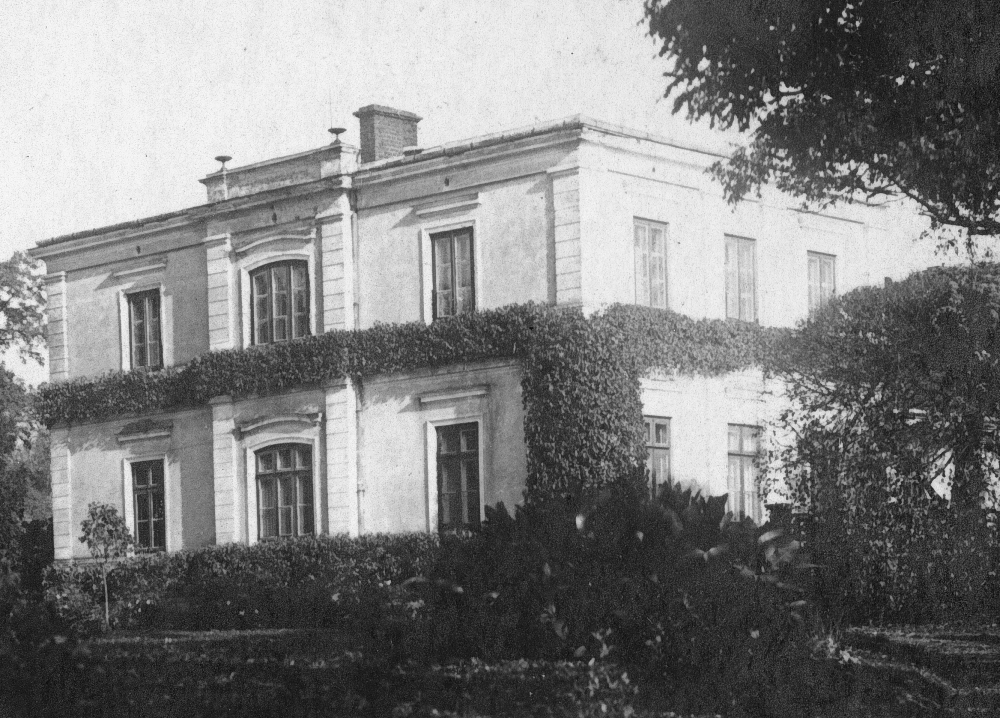
In the 18th century, the estate belonged to Joseph Pulaski (1704–1769), Casimir’s father, District Governor of Warka, lawyer, politician and the first marshal of troops who took part in the Bar Confederation. The confederation was a rebellion by Polish nobles against Russian interference in Polish affairs and the pro-Russian King Stanislaw August Poniatowski, who, incidentally, visited Winiary on February 23, 1787.
The estate often changed owners and the Palace was rebuilt several times. After the Pulaskis came the Walewski family, then the Brochowskis, Zaborowskis, Jordans, Kurtzs, Prozors, and Prince Wlodzimierz Czetwertynski. In 1882, the property was acquired by Andrzej Szczuka, President of the first bank in the Kingdom of Poland known as the Land Credit Society (Towarzystwo Kredytowe Ziemskie). In 1909, Jozef Szczuka inherited Winiary from his father. Documents show he turned it over to his brother Andrzej Szczuka as early as in 1913. The latter sold the property to Wojciech Hilary Rostworowski. The last owner of Winiary, starting from December 1921, was Count Waclaw Godziemba Dambski (1888-1972), a farmer, brewery owner, cavalryman, friend to artists, scientists and politicians, who also followed in his predecessors’ footsteps by continuing to cultivate grapes.
With Godziemba Dambski as the owner, the Manor welcomed many famous and distinguished guests from the world of culture and politics. The memoirs of his son Michal mention Chief of State Jozef Pilsudski; pianist, composer and politician Ignacy Jan Paderewski; General Lucjan Zeligowski; General Boleslaw Wieniawa-Dlugoszewski; General Stefan Rowecki-Grot; historian and writer Prof. Juliusz Harbut and botanist Wladyslaw Szafer. Painter Jozef Mehoffer spent some of his holidays here. The Museum’s collection includes two of his charcoal sketches from 1935: “Portrait of Cecilia Dambski from the Maslowicz family” and “Portrait of Count Waclaw Dambski” (property of the Dambski family) . Painter, illustrator and stage designer Antoni Uniechowski visited the estate on several occasions.
Waclaw Dambski owned Winiary up until 1945. As a result of the Decree on Land Reform, the manor, farm and park became property of the State. The palace was made seat of the first Municipal Middle School in Warka with boarding and housing for teachers. Later, a high school was also added. In 1951, the building hosted a Regional Museum of the Polish Tourism and Sightseeing Society of the District of Grojec, which featured the history of Warka and its environs. The initiators of this project were local teachers working at the Polish Tourism and Sightseeing Society, mostly Wiktor Krawczyk and Aleksander Gajewski . The museum displayed historical, archaeological and ethnographic artifacts.
The Casimir Pulaski Museum
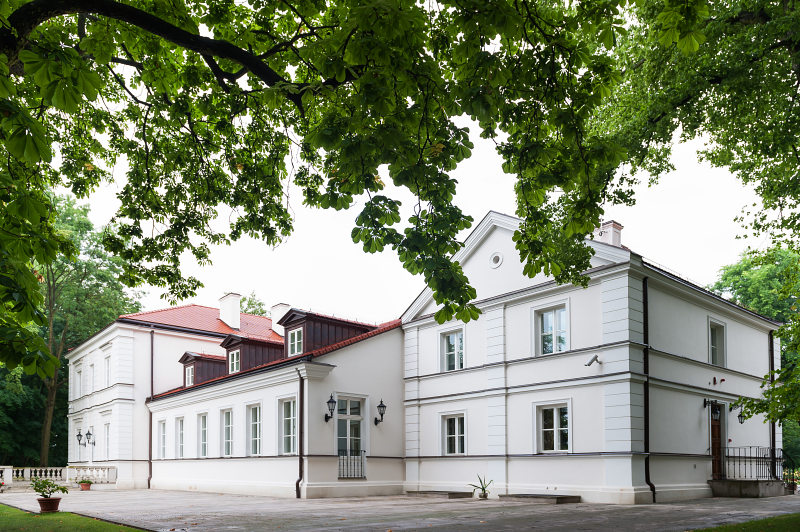 The first initiatives to establish a museum in Warka-Winiary and to name it after Casimir Pulaski date back to pre-war times. Such ideas came from many of Count Waclaw Dambski’s friends, but it was the botanist and rector of the Jagiellonian University Wladyslaw Szafer and historian Dr. Juliusz Stanislaw Harbut who made the first efforts to transform Winiary into a symbol of the Polish-American bond.
The first initiatives to establish a museum in Warka-Winiary and to name it after Casimir Pulaski date back to pre-war times. Such ideas came from many of Count Waclaw Dambski’s friends, but it was the botanist and rector of the Jagiellonian University Wladyslaw Szafer and historian Dr. Juliusz Stanislaw Harbut who made the first efforts to transform Winiary into a symbol of the Polish-American bond.
Another group which played a large role in creating the foundations for a Casimir Pulaski Museum were teachers working with the Polish Tourism and Sightseeing Society (Polskie Towarzystwo Turystyczno-Krajoznawcze, PTTK). They created a regional museum, which was becoming more and more popular with tourists, including visitors from the USA. In March 1947, the Palace hosted a gala event to celebrate the 200th birthday of Casimir Pulaski. The guest list included the Deputy U.S. Ambassador to Poland Gerald Keith and representatives of the Polish American community. This event created yet another important impetus to establish an institution specializing in emigration.
On January 18, 1961, the Council of Ministers adopted a resolution calling The Casimir Pulaski Museum into life and in the years 1962-1966, the manor underwent a general renovation. The entire building was to become a museum, but it was not until January 1967 that the historical and biographical Casimir Pulaski Museum, devoted to the Polish-American Hero and emigration to the United States, officially opened its doors.
- Details
- Category: Page
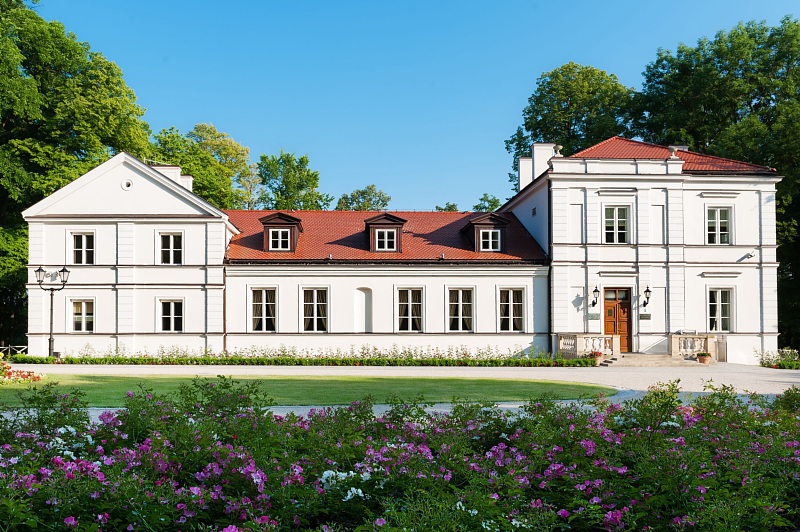 Winiary, once a village and now a northeast part of Warka, has a long-standing tradition of wine and history. Located on an escarpment on the Pilica River, this extraordinary place is one you simply must visit.
Winiary, once a village and now a northeast part of Warka, has a long-standing tradition of wine and history. Located on an escarpment on the Pilica River, this extraordinary place is one you simply must visit.
Tall, old trees of the historic park surround this white classicistic manor. Its history can be traced back to the early 17th century. For over 300 years, it often changed owners, bustled with life, witnessed history and human experiences. Following owners and evolving fashion trends affected its architectural shape and decor. Today, after a general renovation, we can say that this home regained its former glory and manages to capture the spirit of traditional Polish hospitality by inviting anyone and everyone who wants to cross its threshold for a visit.
In 1967, the manor began to house the historical and biographical Casimir Pulaski Museum, devoted to its most prominent resident and Polish-American Hero in the quest for the nations' independence. In the Museum, you are certain to learn not only about the fate of the exceptional Casimir Pulaski, but also about other great Polish expatriates in the United States. Warka-Winiary will give you a feel of an old noble house and the opportunity to rest surrounded with untouched nature. Barks and whispers of old trees, birds singing, and the all-present spirit of this place attract local and international tourists every day.
The Casimir Pulaski Museum in Warka makes its life mission to cultivate the memory of the Hero of Two Nations Casimir Pulaski and other great Polish expatriates in the United States and beyond, and to preserve the material heritage tied to them. It protects the tangible and intangible assets connected with the culture of Warka, Grojec and their environs. Finally, the Museum aims to meet the needs of the local community by providing them with learning opportunities, creating patriotic stances, community ties, and emphasizing the underlying mutual history.


